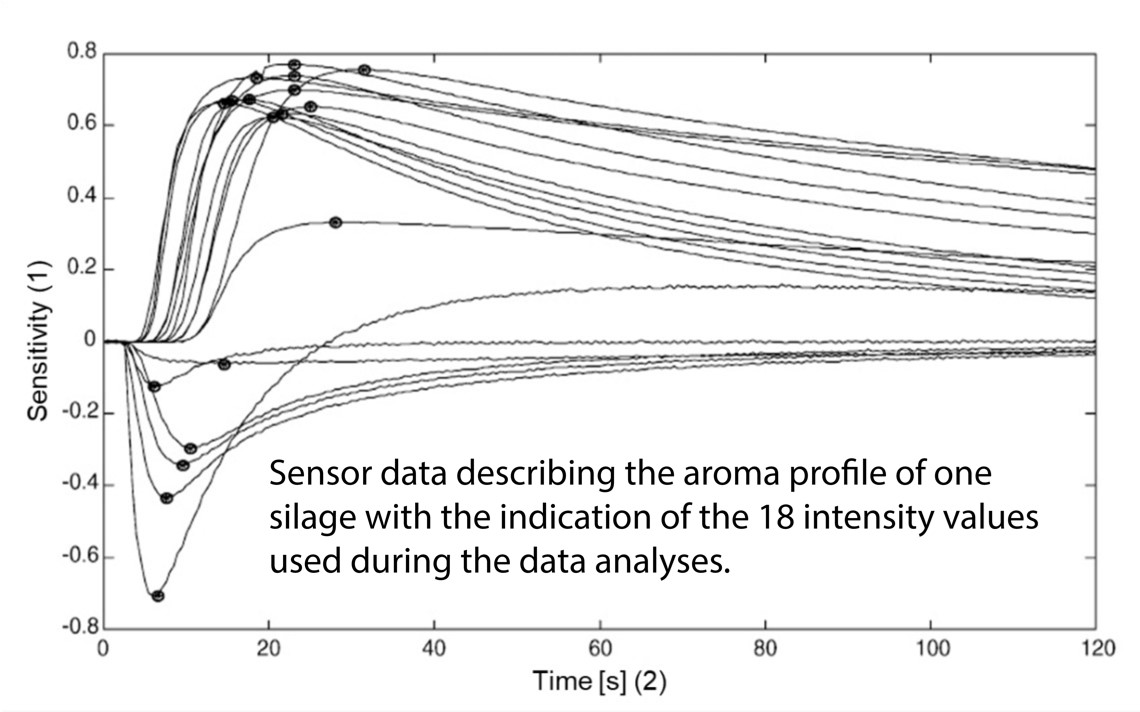The smell of fermented forages characterizes their quality well, due to which characteristic the organoleptic evaluation is part of the routine quality inspection. Instrumental aroma testing techniques provide the opportunity to perform an analysis similar to human sensory evaluations automatically, always with the same conditions, objectively, even with a very large number of samples. In the framework of the research carried out with the colleagues of Hungarian University of Agriculture and Life Sciences and ÁT Kft., we developed a methodology with which we can characterize the quality of alfalfa and rye silages and haylages based on electronic nose data. We published our results in the Hungarian Journal of Animal Production.
Description of the odor profile of fermented alfalfa and rye silages using an electronic nose
Haruna Gado Yakubu, George Bazar, Éva Radó-Nyiczky, Szilvia Orosz, Tamás Tóth
Silages, as conserved forages, form a basic component of ruminant diets. The odor of silage is highly informative and helps in determining the quality. Electronic nose (e-nose) technology provides rapid and objective measurement of odors and may be applicable for quick screening of various silages. Aroma profile analysis of alfalfa and rye silages (n = 22 and 38, respectively) collected from Hungarian dairy farms, produced with different harvest technologies, and covering a wide range of quality, was performed with an e-nose utilizing the metal oxide semiconductor sensor array technology. The odor patterns of the quality categories based on the pH and the lactic acid/acetic acid ratio were compared. The applied e-nose was not suitable for distinguishing between samples made from different plant materials with average compositional parameters, because the effect of species on the odor was less characteristic than that of the diverse processing conditions. However, on the basis of the aroma profiles described by the measured sensor signals, alfalfa-based forages prepared with different processing (direct-cut vs. wilted) could be accurately identified, and rye samples were identifiable according to the different phenological phases at harvest (before heading vs. heading). In the supervised classification (discriminant analysis) of groups of samples based on pH and lactic acid/acetic acid ratio, 65-75% of the samples selected for validation were correctly identified, which indicates reliability of the method. Based on the results, the presented instrumental aroma testing methodology proved to be promising in the field of quality testing of fermented forages.

Access the full paper free of charge here:
» Description of the odor profile of fermented alfalfa and rye silages using an electronic nose
